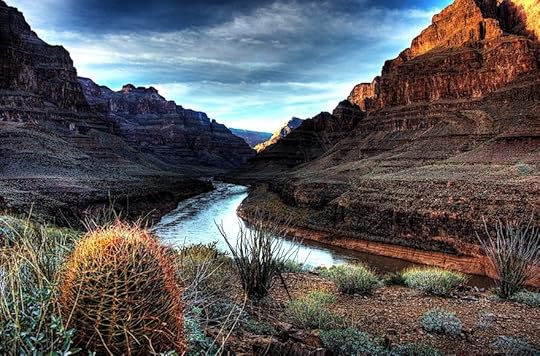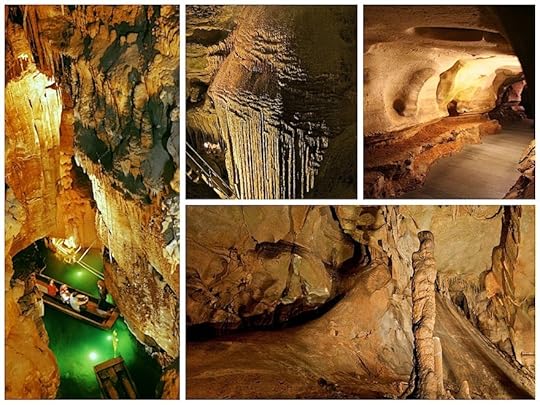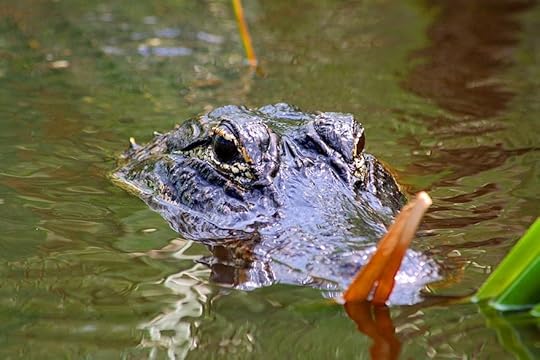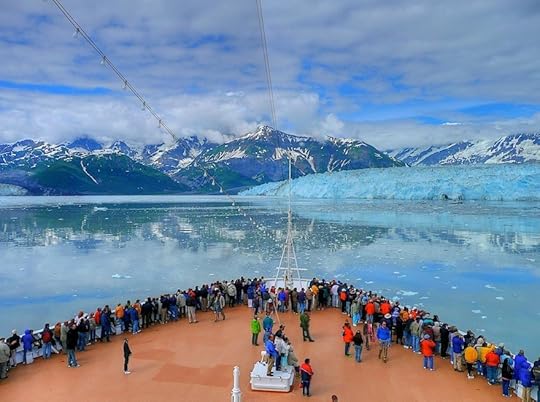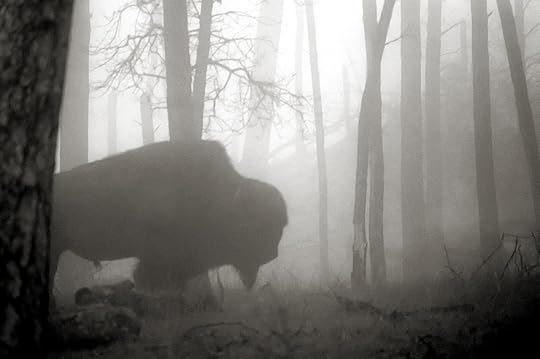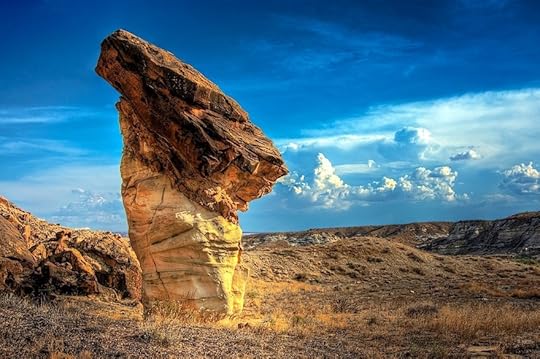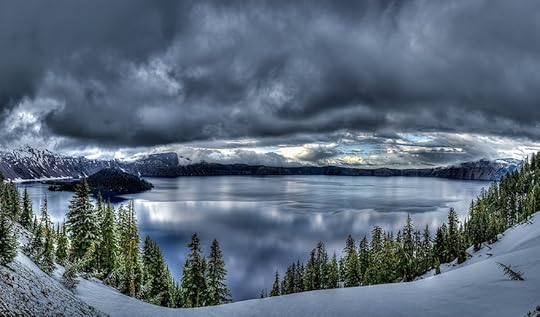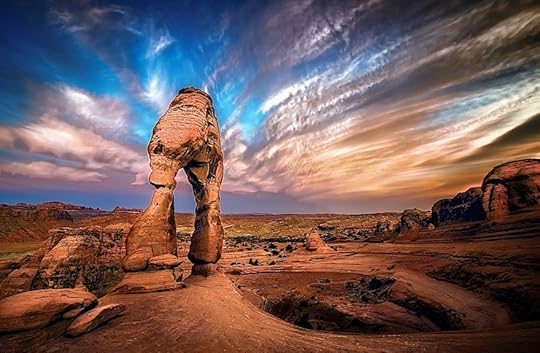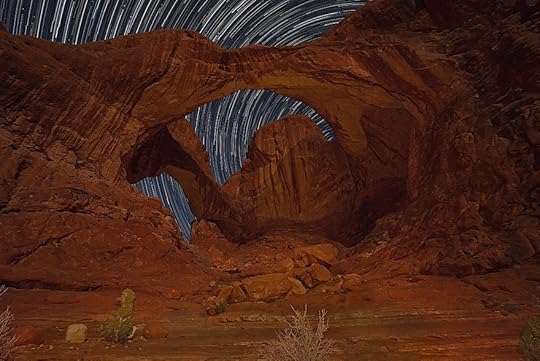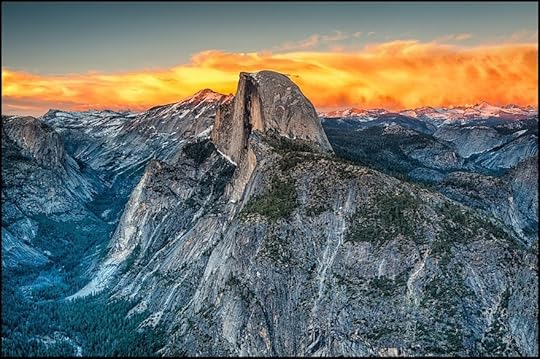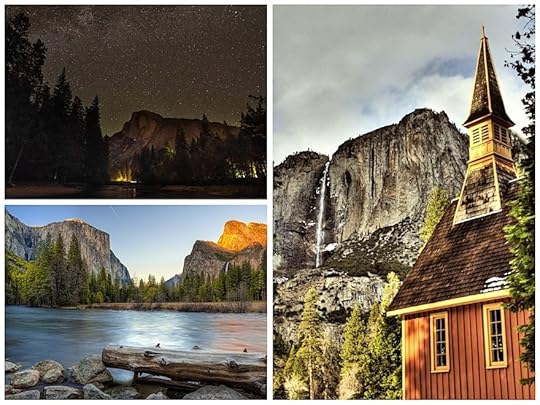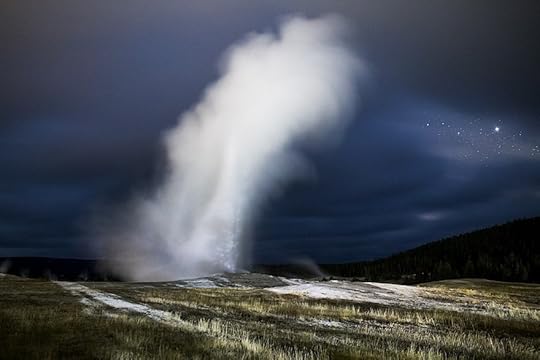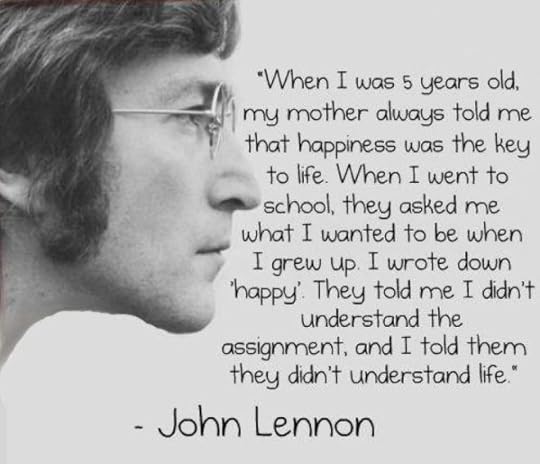Matador Network's Blog, page 2278
April 9, 2014
How to have sex in hostels

Photo: LaughingRhoda
Stop at a drugstore.
This should go without saying, but, if you’re having penetrative sex, especially with a new partner, you should be using barrier methods. If you’re not traveling with your preferred latex of choice, a quick trip to the local drugstore will save any potential coitus interruptus later, when you’ve found just the right spot (on their body and in the hostel) and it turns out you can’t go any further.
See if they’ll switch you to a private room.
If you have the money and your hostel doesn’t mind a potential overnight guest, you can be completely above-board and adult about the whole thing and just ask to move your things to a private room. Your new fun buddy can share the cost for one night, and if you don’t meet up again, you can move back to the dorms. If you do decide to repeat the process, you can negotiate staying in a place where private rooms are pretty cheap and move in together for a little while.
Be open to experimentation.
Due to the nature of some dorm rooms and gender-segregated bathrooms, it might be easier to find private spaces to get it on if you prefer or are interested in experimenting with people who are the same identified gender as you. Have fun!
Visit the showers.
It’s a long-held tenet of hostel living that nobody takes showers in the middle of the night. It’s really true. If you’re looking for a private (if echoey) location to rub up against someone, the shower stalls/room at 3am are a good place to start. You’ll have to be pretty quiet, though, since every noise carries a mile, and you might end up accidentally knocking over shampoo bottles, the soap dispenser, or the handheld showerhead.
Visit the common room.
Chances are nobody is going to be playing foosball at 4am either. You run more of a risk of being surprised by returning late-night revelers, or being given the stink-eye by the nighttime desk person, than if you’re someplace less…communal, but at least the common area usually has couches, hammocks, or other soft things to snuggle up against. Not recommended in strictly religious countries or when the desk clerk is somebody’s elderly grandmother.
The roof, the roof, the roof is on fire.
And so can you be if you head upstairs — many a hostel has rooftop access for the intrepid few who like to see the stars. Sometimes hostels will rent it as a last-ditch resort when all the rooms are full, so there might be enough space for some sleeping bags or a tent already.
You can usually find roof access by just climbing as high into the hostel as you can go and looking for the door or stairs. I once spent a lovely evening on a hostel rooftop in Marrakech with a small fire barrel and a couple of Canadian tourists. No, we weren’t getting it on, it was just a nice place to spend time.
The dorms can work in a pinch, but be very, very quiet.
Only jerks have sex in a bunk bed. Repeat, only jerks have sex in a bunk bed…when somebody else is in the other bunk.
I was once woken up at 4am every. morning. by the guy in the bunk bed above me reshuffling his entire mattress/pillow situation to sit in meditation. Imagine how irritating it would be if you fell into bed, exhausted after a long day of travel, only to be woken up an hour later by squeaking, moaning, and muffled laughter that shook your entire bunk like a boat on the high seas. Now imagine that happening when you have to catch the first bus of the day the next morning.
Don’t be that jerk. Try to avoid the bunk beds if at ALL possible in favour of smashing yourself into the closet, blundering into the bathroom, or lying on the floor. And really, if you don’t have any other option than bringing a new sexytimes partner back to your dormitory floor, maybe you should just wait until the morning and get a nice private room somewhere instead? 
The post How to have sex in hostels appeared first on Matador Network.
11 things you notice about LA
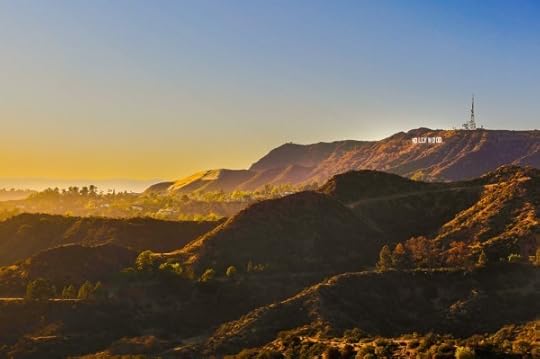
Photo: Gregg Jaden
Moving to LA is like moving anywhere else except that LA is bigger, weirder, and has more to gawk at, complain about, and enjoy than any other place I’ve been.
Now I should state that I HATE it when people make generalizations about any place (and LA is a place people love to generalize about), and that LA is fucking massive — it’s cities within cities that literally defy categorical description because there’s no one ‘LA’ — drive a few blocks and the landscape and culture transform before your very eyes.
I moved from Seattle two years ago and have only lived in the Hollywood area of LA — first in West Hollywood and now in East — and so I’ve only resided in the most cliched, strangest, schizophrenic five square miles that LA has conjured up for the edification of tourists and the entertainment elite. So when I talk about LA I’m talking about my own little periscope of experience that I’ve had in LA — a city that I could spend a lifetime exploring and still would not even scratch the surface.
1. No coconuts
This example may only serve to identify the staggering depth of my Los Angeles naiveté, but the very first thing I noticed upon entering LA was the total lack of coconut-bearing palms. Being from Seattle I’d only experienced palm trees as a result of travel to tropical locations like Central America and Southeast Asia, places where coconuts droop from palm fronds and can be harvested by any intrepid human or monkey. Within 15 minutes of being in LA my world came crashing down around my ears. WHERE ARE ALL THE COCONUTS!! I demanded, peering wildly around. Rows upon rows of palms, some tall and spindly, some stout and squat, but not one of them bore a single coconut.
I immediately asked the first local I could find, “Why don’t the palm trees have coconuts?” and a look of complete astonishment broke over her face.
“I…don’t know. I’ve never thought of that.”
2. Helicopter noise
If there’s such a thing as peace and quiet in LA, I’ve only found it with my face submerged in the Pacific Ocean. Otherwise a clattering, whooshing, honking, bellowing, farting cacophony is so ever-pervasive that I’ve begun to think of it as the species of whimsical white noise that can be found in the echoes of any conch shell.
But let’s get real — it’s just fucking loud here. And above the dull roar comes the choppa-choppa-choppa of a circling helicopter that’s banking low over your neighborhood in search of…something. These metal birds fill the sky — on a hike in the Hollywood Hills, when I’m above the city and can really scan the entire metropolis, a favorite game is ‘count the ‘copters.’ Near and far they circle and spin — news crews, police choppers, emergency air transports, military and coast guard — each adding a new layer of choppa-choppa to the schizophrenic symphony.
3. No weather / no seasons
People ask you how you like LA and the first damn thing that always flies out of your rain-soaked Pacific Northwest mouth is how gosh darn awesome the weather is. And it is. And not just because you come from what people believe is a land without sun. The weather is…perfect. The sun graces LA an average of 292 days a year, and the median temperature is about 74°F. Not too shabby.
But wait — all of this sunshine can get old if you enjoy a little thing the rest of the country calls ‘seasons’ and ‘weather.’ I don’t love the rain, but I like it. I also like waking up to the first snow of the season and watching for the cherry blossoms to bloom in recognition of spring, and these are things you sacrifice in the name of Awesome Weather.
4. Teeny tiny dogs
This is maybe a Hollywood thing, I don’t know. Or maybe it’s a city thing, I don’t know. Whatever the reason, it seems the majority of dogs are selected on lowest body weight and largest eyeballs. These little creatures are like spoofs of what a dog could be if rendered completely incapacitated from all its animal power and made into a shivering, bug-eyed accoutrement. I call these dogs ‘tacos’ (for their size and their snack-like appearance), and for better or worse they’re everywhere, which leads me to…
5. Dog shit
Like any great city, LA has more dog shit than it knows what to do with. I took a break from writing this article, went for a walk, and stepped in dog shit. The other day I was strolling to the grocery store and stepped in dog crap twice — fresh poo for each shoe! Surely you’re thinking I need to pay more attention, watch my step, and maybe I do — but the sheer volume of dog-bombs that I don’t step in every day is astounding.
I’m not the only one who’s noticed this smelly public safety problem, as homemade signs abound that beg, threaten, and cajole dog owners into removing and properly disposing of their pooches’ fecal leavings. Even so, you can’t stride 10 feet without finding a turd. This is not only offensive to my delicate nasal passages, it’s genuinely an ecological disaster if you consider that in 1991 the EPA put dog poop in the same category as herbicides and insecticides; oil, grease, and toxic chemicals; and acid drainage from abandoned mines. Abandoned mines!
6. Leaf blowers
It’s not a jet pack — even though it’s as loud as a jet engine. And it’s not a flamethrower — even though it runs on gas and looks like a trench-clearing war toy. It’s the bane of my LA existence, the leaf blower. We don’t blow a lot of leaves in Washington (they’re wet and stuck together). When we have a pile of tree debris, we rake it up and that’s that.
In LA, all manner of ground waste is ‘cleaned’ by blowing it into the air, swirling dust and garbage in a dirty little storm of flotsam. This seems to be the way to deal with anything on the sidewalk — leaf blow it into the street. If only they’d invent a leaf blower that deals a death blow to sun-baked chihuahua poop.
7. Awesome food
It’s not all leaf blowers and dog shit to the LA newcomer — a land of gastronomic delights awaits! LA showed me that a good carnitas is worth a 40-minute drive through traffic. LA has enormous ethnic communities from all over the world. It has the biggest population of Vietnamese and Thai outside their home countries, and this means incredible and authentic food.
People think LA, and they immediately go for great Mexican, of which there is plenty, but there’s so much more to explore. Keep cash at the ready — you’re bound to run into a food truck, and you want to be ready!
8. Duck lips and other plastic surgery fails
Duck lips is the unfortunate result of too much of a good thing. The absurdity of these preposterous protrusions of over-stuffed lips is lost only to the bearer of the duck lips. They think it looks great.
On one of my first trips to the grocery store in Beverly Hills, I saw duck lips for the very first time. It was as if every botched C-list celebrity surgery that was ever paraded on TV suddenly made sense — for if you pay good money to inflate your face-parts for god knows what end, then you’ll pretty much do anything.
9. Running red lights
Driving in LA can be nuts. Yes, the traffic is EPIC. Yes, it takes forever to get anywhere. But it isn’t just the density of the traffic that strikes you — the rules of the road have evolved in LA to accommodate the manic stream of motorists, and to the newcomer it can look like lawless chaos.
The best example of this is that everyone runs red lights when they’re turning. There’s almost no opportunity to make a left-hand turn at a light, and so two to five cars take their turn after the light goes red and the opposing lanes of traffic begin to move. In this way the green light is eaten up by people taking their left-hand red-light turns, and the intersection comes to a standstill. Everyone grips their wheel and stares forward.
At first this shocks you. Then it offends you. Then you give in and run the red light.
10. Valet Jedis
As night falls, they can be seen swinging their red ‘lightsabers’ at any approaching car: the valet Jedis of Hollywood. Valet parking is not a thing in Seattle — here it’s a way of life, and so I was introduced to the way of the valet. I enjoy watching opposing Jedis standing kitty-corner to each other competing for customers. Their lightsabers arch through the air, and from my car I make Darth Vader breath noises and beseech them, “Join the Dark Side!”
11. Mountains!
On my daily two-hour sunset hike yesterday through Griffith Park I realized I’d be selling the whole damn city short if I didn’t include the Santa Monica Mountains in this list. They’re truly one of the most striking features about LA — no other American city has a mountain chain running through it.
My love for the mountains (known to most outsiders as the Hollywood Hills) and their dozens of parks large and small is enormous! Did you know the Santa Monica Mountains are also the oldest mountain chain in North America, and that there are over 1,000 archaeological sites cataloged within them, the oldest dating back to 5,000 BCE? Seattle’s got nuthin’ on that. 
The post The first 11 things you notice about LA appeared first on Matador Network.

Why Brits make the best travelers

Photo: Leanne Surfleet
In recent years, I’ve grown to feel that we Americans are getting much better at travel than we used to be. Other than a few spot-on stereotypes (we’re incredibly loud people), we don’t fit the ‘ugly American’ mold in quite the way we used to. The last few times I’ve traveled, I’ve bumped into other traveling Americans and, unlike a few years ago, have not been deeply ashamed.
But while we’re getting better, I still don’t think Americans deserve the title of ‘world’s best travelers’ — that goes to the Brits.
Obviously, such a judgment is necessarily based on anecdotes, omissions, and stereotypes. I’ve never been to Ibiza, which I’ve heard is at times an absolute hellhole of British teenage debauchery, and I’ve managed to avoid a lot of the typical party places while traveling, disposed as I am to a beer, a chat, and a good night’s sleep. So maybe I’ve just managed to miss the worst.
But in my experience, Brits are courteous, fun, and engaged travelers. Here’s why I think that’s the case.
They used to own pretty much every country.
Remember that place you used to live with all those wacky roommates back when you were in college? You were kind of an inconsiderate dick back then, and your relationship with your roommates was a bit tense at best, but now that you’ve moved on to bigger and better things, it’s nice to go back to the old apartment to hang out with the old roommates every now and again. You get along much better now that you’re not smelling their laundry or dealing with their loud sex.
That’s what I imagine traveling as a Brit is like. Because the British Empire used to include virtually everyone. Parts of Africa, huge parts of North America, vast swathes of Asia, all of Australia — all of these places are like old British apartments they get to drop in on every now and then. They’ll get along with all their old roommates as long as they promise not to stay permanently and get super manipulative and creepy again.
Seriously, though, shared history is a factor when traveling to a different country. The US probably has the most shared history with Mexico, Canada, and the UK, and I’ve found these places to be among the easiest for an American to travel in — in part because of language considerations, in part because of similar values, and in part because of similar temperaments. The Brits spread their culture throughout the world, and though they’ve pulled their borders back to their own islands, that culture is still waiting for them when they go back.
British reserve is a real thing.
The national character obviously helps in travel. Americans are a loud, boisterous, friendly people, but when we go into other countries, that loud boisterousness often feels more rude and crass than friendly or charming. Brits — particularly the English — do not have this problem. The British character of having a stiff upper lip, being less openly emotional, and generally not making a big deal of things is extremely well suited to foreign travel.
This isn’t to say Brits can’t be extroverted — a ton of them are — just that their baseline is a lot lower than Americans’ or Australians’. Many Canadians are similarly soft-spoken and polite, and it makes them better travelers as well.
Consider the geography.
One of the reasons international travel is so much less popular in the United States than it is in Europe isn’t because we’re close-minded or disinterested in the rest of the world — it’s that other countries are so goddamn far away from the United States that it takes hours longer to get there. And we’ve got fewer options: Our only land borders are Canada and Mexico, and the only other close-by countries are tiny islands in the Atlantic and Caribbean.
In the UK, you can be in Ireland or France in no time at all, and you could easily travel to the rest of Europe, Northern Africa, and parts of the Middle East in the time it would take me to drive from my current city, Washington, DC, to my hometown of Cincinnati — only about a quarter of the way across the US.
As such, it’s much harder to live in the UK and never travel abroad than it is to live in America and never travel abroad. So you’d probably learn how to travel at a much earlier age, and it’d be a much larger part of your culture. Of course, this advantage is available to anyone who lives in Europe, not just Britons, but it’s compounded by the other factors.
They can travel more cheaply.
This is similar to point three: Travel is much cheaper in Europe than it is in the United States. I’ve been told by British friends that Americans travel too fast, that they tend to speed from one tourist landmark to the next, hopping through cities, snapping pictures, and moving on.
The reason is the cost. I recently took a trip to London and Paris with my girlfriend, and even going as low-budget as we can, with our incomes, we likely won’t be able to afford to get back over to Europe for another two to three years. So the impulse, once we get there, is to see as much as we can.
This wouldn’t be the case if America had more cheap airline options, like England’s EasyJet or Ireland’s Ryanair, and better, cheaper rail systems. And while, again, this is a benefit for all of Europe, Brits have the advantage of London airports being the central hub for a lot of these budget airlines.
In short, Brits have a number of cultural, geographical, and economic factors that make them more likely to travel and, as a direct result, more likely to be a better traveling culture. Or, you know, maybe they’re just fleeing the weather. 
The post Why Brits make the best travelers appeared first on Matador Network.

18 natural wonders of the US [pics]

This post was produced in partnership with our friends over at Roadtrippers, a simple but powerful road trip planner that helps you discover, plan, & book your adventure.
I’VE BEEN FORTUNATE ENOUGH to have traveled to some amazing places around the world over the last 10 years: Bolivia, Papua New Guinea, South Korea, Mongolia, Jordan, and the list goes on. But I’m not exaggerating in the least when I say that some of my favorite trips have taken place here in the US — typically behind the wheel of my car, on a lonely state highway.
America is just massive. At 3.8 million square miles, it’s three times larger than all the countries listed above combined. So it’s kind of a given that our country would be home to spectacular deserts, mountain ranges, volcanic features, ancient forests, waterfalls, canyons, glaciers, caves, and swamps. But that fact doesn’t diminish the awesomeness of these places.
As summer approaches, my wife and I can’t wait for our next opportunity to hop into our little Mazda with the dog and go find a spot we haven’t been to yet in our thousands of miles of driving around this country that keeps on giving. Hope to see you out there.
1. Death Valley, CA
A section of the Mojave Desert, Death Valley is the lowest, driest, hottest place in North America.
(1) Trey Ratcliff (2) Pedro Szekely (3) Gleb Tarassenko
2. Kilauea, HI
Kilauea, on the Big Island of Hawaii, sends streams of lava steaming into the Pacific Ocean.
(1) Tumanc (2) Esten Hurtle
3. Monument Valley, UT
The sandstone buttes of Monument Valley stand like towers in the Four Corners region of the Western US.
(1) Wolfgang Staudt (2) Trey Ratcliff (3) clockwise L to R: Bosure, Wolfgang Staudt, Jason Corneveaux, Kartik Ramanathan
4. Niagara Falls, NY
The tourist vessel “Maid of the Mist IV” does a float-by of the American Falls.
(1) Arne Bornheim (2) paul bica (3) Daniel Peckman
5. Redwoods, CA
The tallest trees on the planet hide out in a few remaining tracts of Northern California’s old-growth coastal forests.
(1) m24inStudio (2) clockwise L to R: Giant Ginkgo, Mike Baird, jjgardner3 (3) Justin Brown
6. Grand Canyon, AZ

A mile down from the canyon’s rim, the Colorado River is still cutting.
(1) Ignacio Izquierdo (2) Randy Pertiet (3) Steve Dunleavy
7. Mammoth Cave, KY

Mammoth Cave National Park protects a portion of the longest known cave system in the world.
(1) Peter Rivera (2) clockwise L to R: clarkmaxwell, Peter Riviera, Insley Pruitt, Peter Riviera
8. Florida Everglades


The Everglades are a 60-mile-wide, super-slow-moving subtropical river covering the tip of Florida.
(1) Timothy Valentine (2) Brian Koprowski (3) crow 911
9. Hubbard Glacier, AK
Where Hubbard Glacier meets the sea, its 6-mile-wide face calves huge blocks of ice.
(1) Alan Vernon (2) Mike McElroy (3) Rich Englebrecht
10. Black Hills, SD
Harney Peak (pictured at top), within the Black Hills National Forest, is the highest east of the Rockies.
(1) blucolt (2) Ryan O’Hara (3) Dave Morris
11. The Mississippi
This monster river system drains 31 US states and is the fourth longest in the world.
(1) Jon Haynes Photography (2) Adventures of KM&G
12. Bryce Canyon, UT
Bryce can be more accurately described as an immense eroded amphitheater, populated with hoodoos (pictured at middle).
(1) Todd Petrie (2) Wolfgang Staudt (3) Sam Gao
13. Mt. Desert Island, ME
The island is protected by Acadia National Park and is all rocky shoreline and crumbly mountain woodland.
(1) Scott Kublin (2) clockwise L to R: Andrew Mace, Scott Smitson, Jim Liestman, Howard Ignatius, Frederico Robertazzi (3) A.D. Wheeler
14. Crater Lake, OR

Collapsed volcano, now a deep blue lake in southern Oregon.
(1) Ninad (2) Howard Ignatius (3) Andy Spearing
15. Arches, UT
The national park preserves land that’s home to over 2,000 of these weathered sandstone arches.
(1) Keith Cuddeback (2) Katsrcool (3) Kartik Ramanathan
16. Yosemite Valley, CA
Looking down Yosemite Valley, you can see Bridalveil Falls and the granite cliff of Half Dome in the distance.
(1) John Colby (2) Nietnagel (3) clockwise L to R: Craig Goodwin, Scott, Nietnagel
17. Carlsbad Caverns, NM


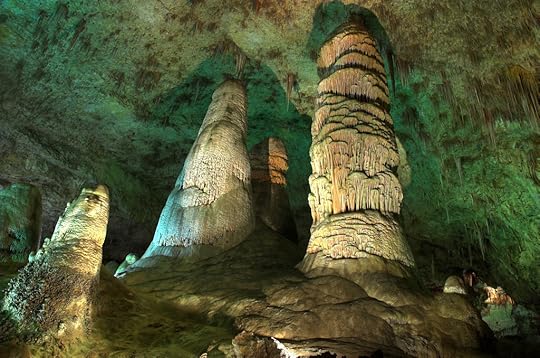
The caverns’ “Big Room” is the third largest cave chamber in North America.
(1) FMJ Shooter~Off to the last frontier (2) G (3) J.J.
18. Old Faithful, MT
This geyser in Yellowstone National Park erupts a 140-foot spout of water at regular 45- to 120-minute intervals.
(1) David Kingham (2) Scott Kublin (3) frazgo 

The open road. That’s what it’s all about. Driving down long stretches of asphalt, pulling over at a local diner for some grub, and discovering the most incredible roadside wonders. Roadtrippers is a simple but powerful road trip planner that helps you discover, plan, & book your adventure.
The post 18 natural wonders of the US that will inspire your next road trip appeared first on Matador Network.

April 8, 2014
Our American Dream is a nightmare
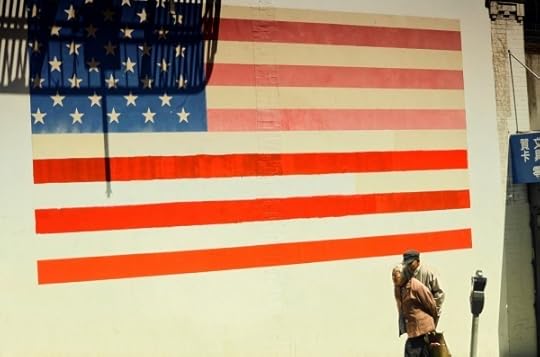
Photo: Robert Gourley
Admittedly that title was a bit of an exaggeration. But allow me to elaborate.
It’s not so often that I run into the predicament that is the American Dream. The one that drives people to work hard, so they can get a promotion and work even harder. It never seemed like a particularly satisfying hamster wheel to me, particularly when the individual’s interests aren’t even part of the equation.
So it’s more often that I encounter the other side of the glass, where the expats from all walks of life have cast off the reins of the so-called dream and embraced a different sort of living, one in which their passions have been reignited, and their appreciation for experiences has long since overtaken any desire they may have had for toys.
It’s their stories that, through contrast, remind me of the American Dream I’m supposed to be living — the one in which consumerism drives an entire nation toward acquisition of material possessions and prestige.
This is the American Dream.
We’re told we need a fancy car, new shoes, a big house, a flatscreen TV, a timeshare in Florida, and a 16-person dining table. Otherwise, we won’t be happy.
At least, that’s what I’m told. I feel so detached from the American Dream I barely recognize its existence. But whenever I’m near a TV, the immediate barrage of celebrity gossip, blaring commercials, who-wore-it-better discussions, and television presenters that sound more like auctioneers than informers bring it all rushing back. This is what most of the country thinks is “normal.” An endless circus of superficial nonsense.
Consumerism is American culture. It’s sewn into the fabric of our national psyche. The American Dream is a big house, a nice car, a white picket fence, a nice TV, and an outdoor pool.
Notice anything? 100% of those “dreams” are material possessions. Is that really a dream worth dreaming?
It is, of course, wrapped hand-in-hand with economic opportunity, and political equality, which have long been part of the American Dream as well. But anyone who’s been paying attention to the American landscape in the last 30 years will tell you that neither of those areas has been looking good lately.
This is the current state of the American Dream.
So what have we got? Compared to many other modern countries, Americans have longer working hours…
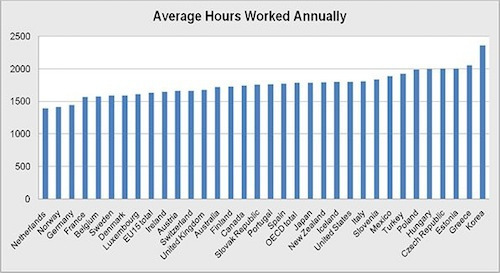
Chart: OECD
…shorter vacation time…

Chart: OECD
…than pretty much any other modern country.
And it’s not just vacation. It’s also sick days and parental leave. Americans get a legally mandated zero. Even Libya gives new moms more paid leave than the United States. Family values indeed.
We’re overworked, and we’re underpaid. Even worse, I think it might stay that way for a long, long time.
Working harder is a one-way street.
There’s certainly nothing wrong with working hard. It’s quite admirable. The problem emerges when a work ethic is idolized so thoroughly that it eclipses quality of life as a goal worth pursuing.
Case in point: Whenever anyone points out how the two-week average American vacation is ridiculously short compared to other countries’, immediately a fellow countryman will point out how life isn’t all about hanging out by the pool. He’d be right, of course, but it doesn’t circumvent the fact that intense workloads lead to lower productivity, lower life satisfaction, and higher rates of suicide. In Japan, the problem is common enough that there’s literally a word to describe working oneself to death: karōshi.
The real trouble is how this cycle will simply never end. If Americans place great value onto the concept of work (and they do), it means any objection to heavy workloads will inevitably lead to retaliation with accusations of laziness.
But the problem is literally a matter of life and death. Remember Korea, way up at the chart of longest hours worked? Well…turns out it’s kind of a problem:

Chart: OECD
There’s value in not working.
Medical care is one of the most obvious places where it would be objectively better to reduce the workload, particularly for overworked medical students and recent graduates, who are expected to work 36-hour shifts with no sleep. Do you want a tired doctor, or a well-rested one?
But even this suggestion is met with skepticism, with people claiming that such intense workloads build character for those in the medical profession, while also removing those who aren’t up to such a lofty challenge. Fair enough. But other countries don’t have those ridiculously long 36-hour shifts. And their doctors save even more lives than ours.
Says something, doesn’t it?
The endless cycle continues.
Unfortunately I expect the drive toward “success,” along with the general elevation of hard work to saintly status, will continue to operate as a one-way ratchet indefinitely, particularly given recent economic trends. As the current economic climate forces people into poverty, they’re expected to work harder to make up for the loss. College students are expected to work second jobs to pay off their draconian student loans. Single parents are expected to work overtime to pay for daycare. Those struck with exorbitant medical bills should simply pick up an extra shift.
It’s not that there’s anything particularly wrong with putting increased effort into this process; it’s perfectly admirable to do so. The problem is how these issues have been building for decades and show no signs of stopping. Longer hours, more tedious commutes, lower salaries, higher unemployment rates, slashed employee benefits, outsourced workloads, and price inflation have all combined into the perfect storm of maximum stress and minimum financial stability.
And do any of these trends show any sign of reversal? Well, not really. It’s certainly possible that we’ll see better economic trends in coming years, which would reduce the money-related difficulties of those Americans securing those jobs; but it would do little or nothing to reduce the problem of heavy workloads, long hours, or lengthy commutes.
For those trends to be reversed, we’d literally need citizens campaigning for more free time. And how likely is it that their calls for leisure activities will be greeted with respect, rather than disdain? Not likely. Which is why I think we’ll be stuck with this mess for a long, long time.
Which is why I’m going to end with a Beatle:
Indeed. 
This post was originally published at Snarky Nomad and is reprinted here with permission.
The post Why the American Dream will forever remain a waking nightmare appeared first on Matador Network.

13 street artists who aren't Banksy
Though I’m a longtime fan of his street art, I’ve never really been able to tell how firmly Banksy’s tongue is planted in his cheek. On the one hand, it’s impossible to be a street artist whose work is selling for hundreds of thousands of dollars and not be slightly betraying the anarchic nature of graffiti and street art to some degree, but, on the other hand, if I drew a stencil of a girl with a balloon and was offered several years’ worth of my current salary for it, I’d totally take it.
That said, street art is not now and never has been confined solely to the anonymous leviathan we know as Banksy, and regardless of whether you think he’s awesome or, as writer Charlie Brooker put it, “a guffhead of massive proportions” whose “work looks dazzlingly clever to idiots,” there are a ton of other awesome street artists out there from all around the world who’ve done some incredible work. Here are some of them.
1. King Robbo
If we’re talking about Banksy, we’ve got to talk about King Robbo, another London street artist who’s, unfortunately, probably best known for his feud with Banksy. Robbo claims to have slapped Banksy when Banksy dismissed him as a nobody, and in 2009 Banksy painted over one of Robbo’s oldest, best-known works, only to have Robbo paint over that, only to have Banksy paint over that. Here’s the progression:

Robbo’s original piece, “Robbo, Inc.”
(via)

Banksy’s defacement.
(via)

Robbo’s response.
(via)
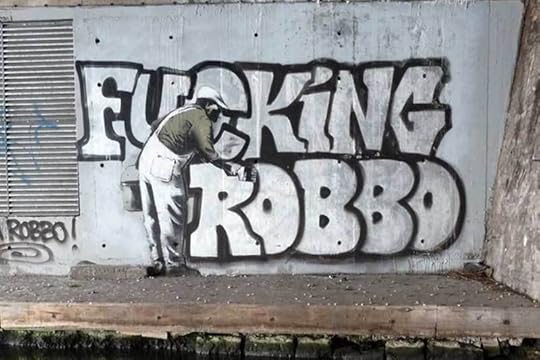
Banksy’s revenge.
(via)

And Robbo’s final response.
(via)
Many of Banksy’s other works have been defaced by Robbo’s supporters, known as “Team Robbo.” Unfortunately, in 2011, King Robbo suffered a fall that put him in a coma. He’s since woken up, but he still has serious injuries. As a Robbo tribute, Banksy painted this (until it’s again inevitably defaced) final iteration of the feud:

(via)
2. Miss Van
Miss Van is known for her surreal compositions and her burlesque-y, mask-wearing female characters.

The Wynwood Walls.
(via)
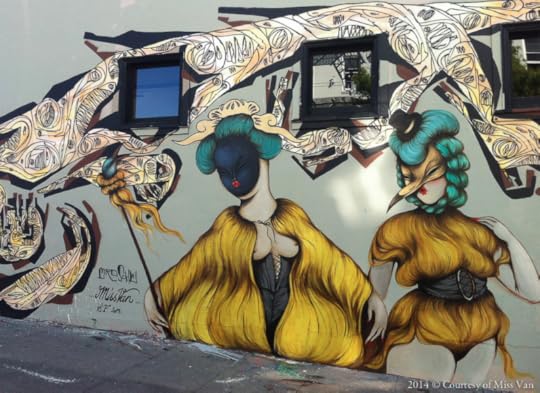
Haight St. / Steiner St.
(via)
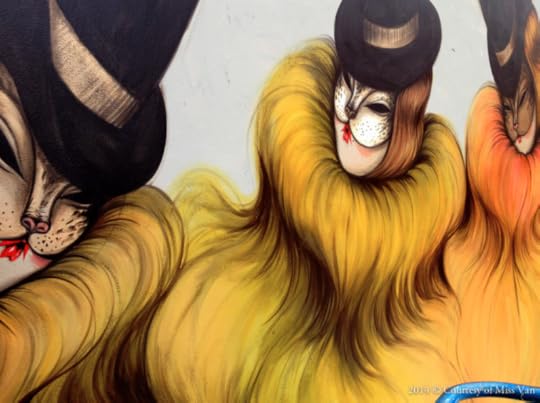
(via)
3. Invader
If you’ve been to Paris, you’ve almost certainly passed any number of Invader pieces. The man has been everywhere, apparently. He’s probably best known to the wider public from his role in Banksy’s documentary, Exit Through the Gift Shop, where he’s shown as the cousin of Thierry Guetta, aka the artist Mr. Brainwash. Invader’s method is using tiny mosaic pieces to make portraits that look like 8-bit video game characters, oftentimes from the game “Space Invaders.” He regularly posts new pieces on his Instagram page.

Invader claims to have posted 1000 works in Paris alone and has posted works in 36 cities on 6 continents.
(via)

Invader’s tribute to Bruce Lee in Hong Kong. Unfortunately, Hong Kong’s anti-vandalism team quickly removed all of his work there.
(via)

Spiderman in Paris.
(via)
4. Gaia
Moving to the other side of the Atlantic, Gaia is a younger artist based out of Baltimore. He’s particularly awesome because he’s a legit artist and not just a street-cred-hungry graffito (not that there’s anything wrong with graffitos). It also means he tends to work on commissions and public murals. I’m a little bit biased — he’s in my neck of the woods.

This painting of Gaia’s is on the Smith Commons restaurant on H Street in Washington, DC, which also happens to be my neighborhood. I particularly love passing this mural every time I’m walking to the bars. Having solid, weird street art adds a ton of personality to my neighborhood. This shit’s good for the soul.
(via)

Another Gaia work from Chicago.
(via)

A Gaia piece in Seoul.
(via)
5. Blu
I first became familiar with Blu while living in Buenos Aires. Blu is originally from Italy but has done murals practically everywhere, and he’s truly incredible. Here’s one of his cooler works that I’ve seen, done in Buenos Aires:
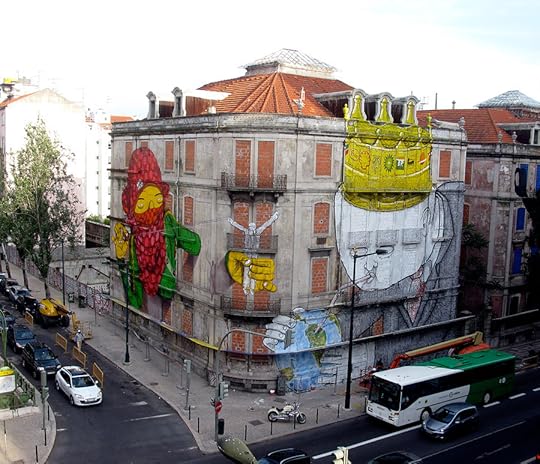
Blu also did this collaboration with the Brazilian street artist twin duo Os Gêmeos (Blu did the corporate king, Os Gêmeos the rebel). It’s possibly my favorite all-time piece.
(via)

A Blu piece in Barcelona.
(via)
6. ROA
ROA is another artist dear to my heart because of the work he did in London’s East End while I was living there, though he’s originally from Ghent, Belgium. ROA tends to do paintings of somewhat creepy animals in public places, and, on occasion, does longer installments where he’ll paint the bones first and then will paint over them until he has a full painting of the animals. Here are a few he’s done:

One of his pieces on Hanbury Street near London’s Brick Lane.
(via)

A piece in Johannesburg.
(via)

A piece in San Juan, Puerto Rico.
(via)
7. Alice Pasquini
Alice Pasquini is an artist from Rome who’s challenging pop-culture representations of femininity.

(via)
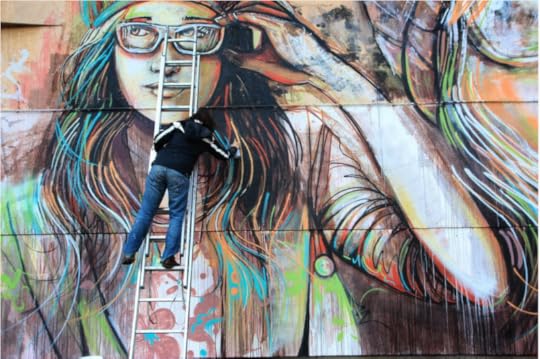
A work in Berlin.
(via)
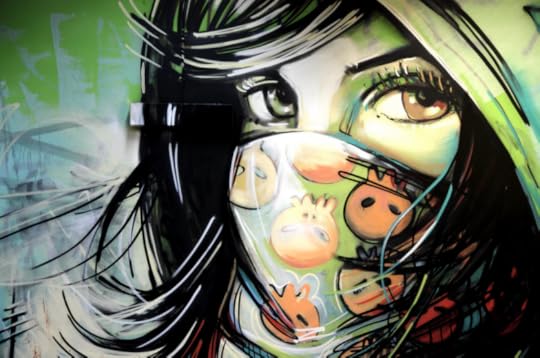
A piece in Rome.
(via)
8. David Choe
LA-based street artist David Choe has a hell of a story: He’s been doing street art forever but made his money when he was commissioned by Sean Parker and Mark Zuckerberg to create murals for Facebook’s headquarters. Because of a gambling habit, he asked to be paid in stock and is now worth $200 million. He now also hosts the podcast DVDASA with pornstar Asa Akira. Also, his artwork is pretty sick. You might recognize his work from the album cover for Jay-Z and Linkin Park’s Collision Course.
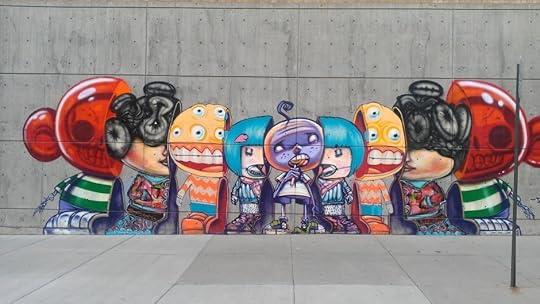
One of Cho’s pieces in Denver.
(via)

Another Denver piece.
(via)

A piece from Kona, Hawaii.
(via)
9. Saner
Saner is based out of Mexico but has done exhibitions all over the place. I honestly can’t find a ton of information on him, but I know if I were to pass his work in the street, I’d stop and look.

This is a collaboration Saner did with another awesome street artist, Aryz, in Mexico City.
(via)
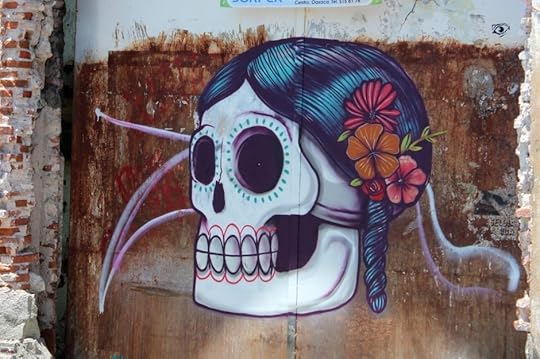
A Saner piece in Oaxaca.
(via)

A piece of Saner’s in Fleury-les-Aubrais, France.
(via)
10. Faith47
Faith47 is a self-taught artist based out of Cape Town, South Africa, and she does some absolutely killer murals.
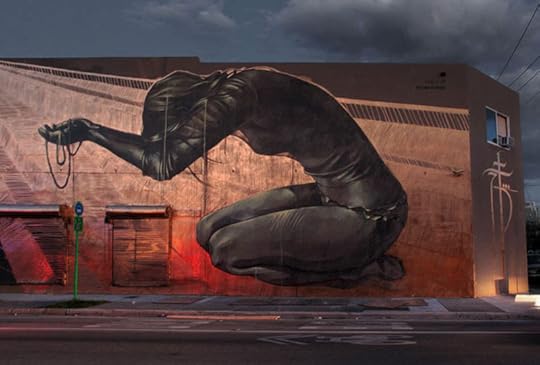
A piece in Miami.
(via)

A Faith47 piece in Cape Town.
(via)

A piece in Gaeta, Italy.
(via)
11. La Pandilla
La Pandilla is a Puerto Rico-based duo, and their work — mostly of bizarre animal hybrids — is just incredibly awesome.

A La Pandilla piece in Miami.
(via)

A La Pandilla piece in London’s Brick Lane.
(via)

Another piece from Miami.
(via)
12. Stinkfish
Stinkfish is based out of Bogota, Colombia, and does incredibly colorful, psychedelic portraits all over the world.

A Stinkfish piece in London.
(via)
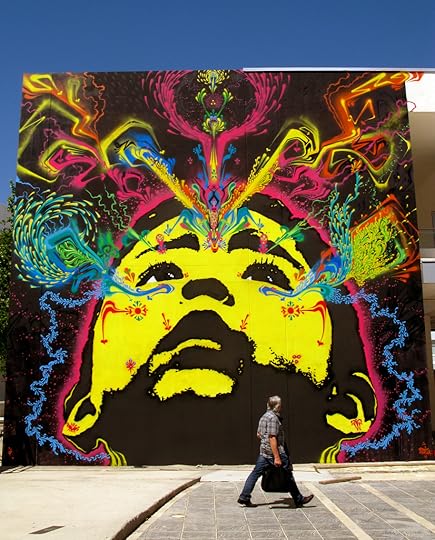
A Stinkfish piece in Valencia, Spain.
(via)

A Stinkfish piece in Bogota.
(via)
13. Lady Aiko
Born in Japan, Lady Aiko has lived and worked in New York since the ’90s. Her work combines a contemporary American art influence with Japanese artistic traditions.

The Bowery Wall, NY.
(via)

The Wynwood Walls, Miami.
(via)

Wynwood Wall detail.
(via)
The post 13 awesome street artists (who aren’t Banksy) appeared first on Matador Network.

Nationalism rant [NSFW]
IT’S COOL TO be proud of where you come from, but what stand-up comedian Doug Stanhope has to say about Nationalism is completely true — many times, it makes us perpetuate negative stereotypes about people and cultures that we’ve never come into contact with. And a lot of times, people dis other cultures because of something they heard from a neighbor, or read on a blog (without doing any research as to the validity of their claims).
Really, the problem with nationalism is that we take it for granted. In school, we’re told about all of the great things our home countries have done for the world, with very little focus given to the things that have made the world worse. We don’t appreciate the things that have gone into what makes a place, or a culture, so great — we’re only taught to raise a stink if something doesn’t benefit us 100% “because that’s what democracy is all about!” (hint: it’s not).
This comedic bit might make people mad, but you have to laugh, because you know it’s true. 
The post This rant about Nationalism is exactly what you need to hear right now [NSFW] appeared first on Matador Network.

Trekking Annapurna in winter [pics]
THE ANNAPURNA CIRCUIT had been on my — and my two travel companions’ — to-do list for a while. But the only time that worked for all of us was in January. This just made it more exciting and even more appealing.
Trekking the circuit at this time of year meant we’d experience Nepal in a quieter time, where lodging would be more available and the hiking wouldn’t be over-crowded. We also liked the idea of not knowing if we’d even be successful getting over the pass; we thought it added an element of adventure.
Watching for cheap ticket prices to get to Nepal was the biggest element of preparation for the trek that we did. We all work as outdoor educators and backpack and mountaineer for our jobs, so if you don’t have much experience, testing out all your gear and doing some winter trips would be very worthwhile before doing the Annapurna Circuit in January.
Quick tips and must-haves:
Make sure to get all the cash you will need for the entire trek in Kathmandu, as there aren’t AMTs until Jomsom.
Food and lodging is about $10/day.
$30/day for each of us was more than enough for everything.
Good hiking boots are key.
Pack gaiters, a warm down jacket, warm hat, and warm mitts (unnecessary at lower elevations but necessary higher up).
If I were to do the trek again, I would try to learn more Nepali beforehand, as well as have a better grasp on the conversion from meters to feet. Otherwise, it was the adventure of a lifetime! 

1
“You’re trekking the Annapurna Circuit in winter?!” “Isn’t that the wrong time of year to go there? Are you taking skis?” Many people would respond to our travel plans with statements like these, and to answer: It’s an adventurous time of year. The circuit has fewer trekkers on it and fewer teahouses open. The weather can be a blizzard, beautiful sunshine, howling winds, or socked in with clouds. It provides an experience of the Himalayas that is less about other tourists, more about true mountain living. It is possible, but getting over the pass is not a guarantee, and that is what makes the hike all the more exciting and rewarding.
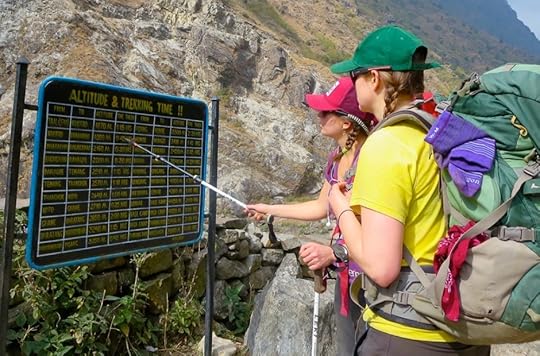
2
The Annapurna Circuit starts in Besisahar, at 2,700ft, and reaches a high point of 17,700ft at Thorong La Pass. This means there is a huge range of environmental conditions you need to be prepared for. Even more so in the winter months, packing many layers—from a t-shirt to a good down jacket—is of paramount importance for success. A notice board and chart with elevation change and hiking times helps for planning a schedule and acclimatization strategy.
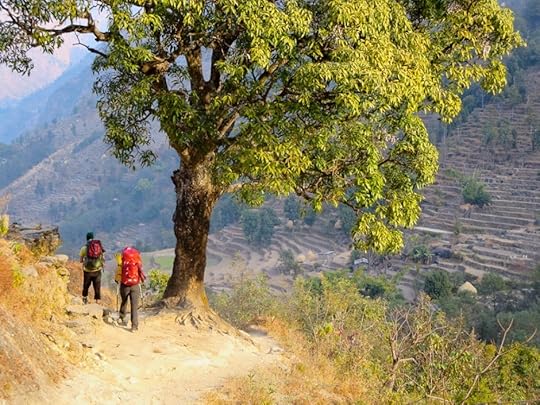
3
The first few days, the trail meanders past terraced rice growing beds (seen here in the background). While it is still likely to be warm at low elevations in January, it is not the growing season, so the fields are brown, and fresh vegetables are pretty minimal in the dishes on the menu.
Intermission
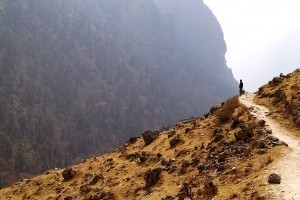
From city to summit: Trekking Nepal’s Langtang Valley
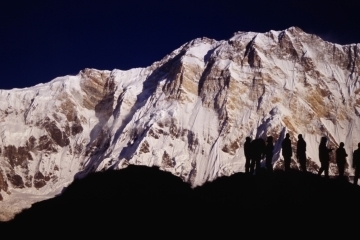
Nepal’s Annapurna Sanctuary trek
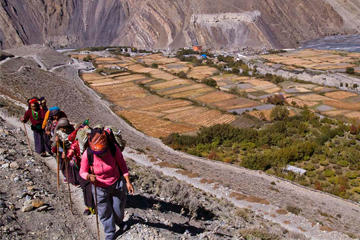
Trekking the Annapurna Sanctuary in Nepal

4
From Besisahar to Manang (11,600ft), the path follows the Marshyangdi, a beautiful blue glacial river. We imagined that in the summer it would offer a refreshing dip spot, but not in January! Bathing in the winter months was limited to bucket showers for the most part, as many of the drains and taps were frozen solid in the teahouses, especially up higher.
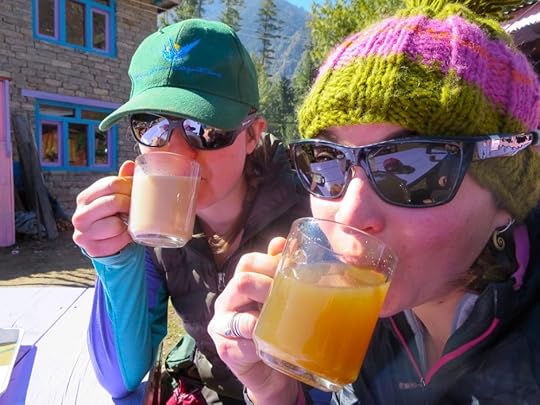
5
Afternoon tea stops were a great way to stay hydrated and enjoy the midday warmth. Many people asked what the temperatures were; I never saw a thermometer. What people are wearing is the best indicator. Look at daytime hiking clothes and evening layers worn while inside the teahouses.
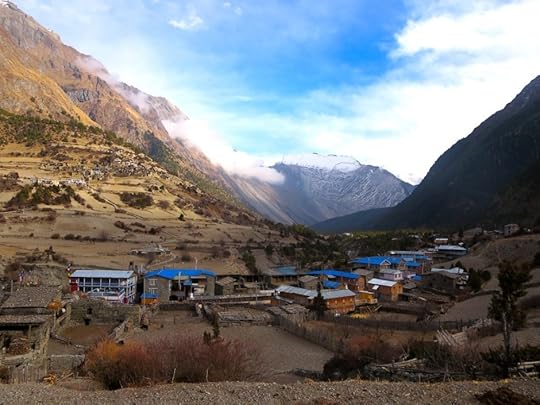
6
Choosing which teahouse to stay in for the night required a group decision that wasn’t always easy. Since winter guests were few and far between, sometimes we were torn about which locals to support. Lower Pisang (10,600ft) offered an overhead view so we could pick out which place might meet our nighttime criteria before we walked into town and teahouse owners started vying for our business.

7
We didn’t see anyone else trekking the day of our biggest blizzard. The wind and snow made for temperatures that were too cold for us to stop for rests, so we were appreciative of the teahouses. That said, inside the buildings were still pretty chilly, and it took some focused effort to dry clothing items in front of the fire in preparation for the next day.
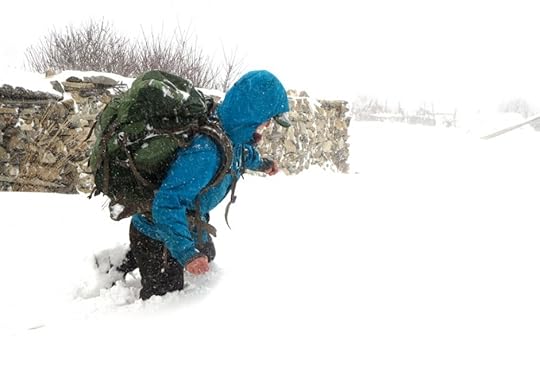
8
Taking turns breaking trail through three feet of snow made for slow progress, but we enjoyed the adventure and teamwork aspect of traveling this way. With all the snow it also meant there were no jeeps or motorcycles traveling the road, unlike the rest of the year when it can be much less peaceful because of traffic.
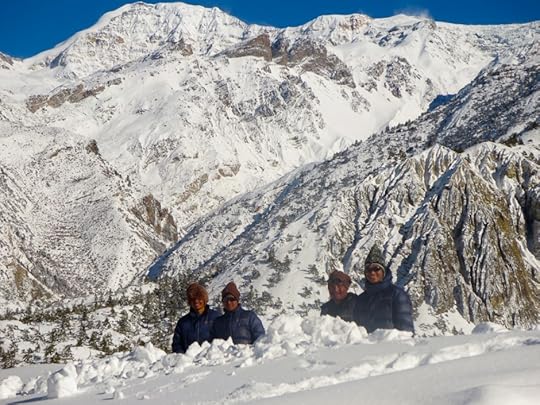
9
Every few days there would be a checkpoint where you have to show your permit to the Nepali police. Here a group of them seem to be happily working away at shoveling off the roof after the storm. Other trekking infrastructure, like health clinics and fresh water stations, were closed for the winter months.
Intermission
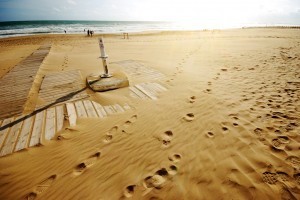
Where locals hit the water in southern Spain
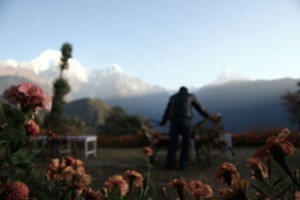
Photo essay: Pokhara to Poon Hill on the Annapurna Circuit, Nepal
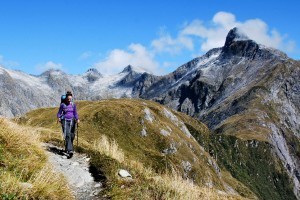
5 badass New Zealand itineraries for surf, snow, and flow

10
A stop to re-warm feet was in order this sunny but cold day. Trekking through the snow meant gaiters were a necessity.
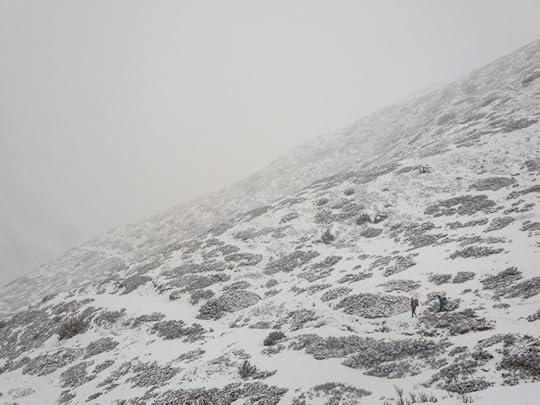
11
Above Manang (11,600ft) the landscape becomes much more desolate and the living is simpler. We moved through this terrain with more focus and intention, knowing with both the altitude and the weather we needed to take care of ourselves.
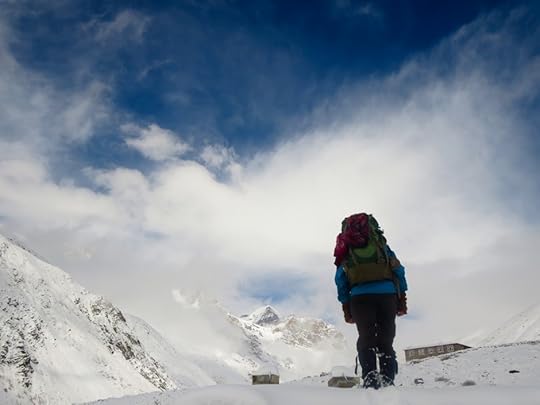
12
The feeling of insignificance at the same time as accomplishment having hiked up and amongst the high peaks offers great life perspective to the trekker, with all the time in the world to ponder…step by step.

13
We crossed paths with a total of 8-12 other groups while hiking the circuit. As a group of three women, and trekking without a guide, we were definitely not your typical crew. However, we all have considerable hiking experience from North American wilderness travel and our work as instructors at Outward Bound.

14
The pass is at 17,700ft, though this was the highest my watch altimeter read when we got to the top of Thorong La at 12:35 on day 12 of the hike. Altimeters are influenced by weather systems and pressure, hence the inaccuracy. As winter weather has a greater impact on travel (trail breaking slows one down), it is a good idea to plan for a few extra days in the winter months.

15
After crossing Thorong La, a decent of 5,200ft down to Muktinath, where the first lodging is, is a long day, is hard on the toes, and requires an early start (in the dark in January) to ensure enough travel time with a safety buffer.
Intermission
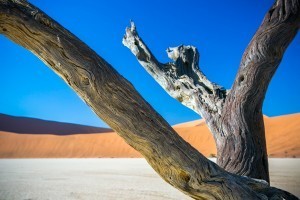
31 surreal images of Dead Vlei, Namibia’s picture-perfect desert
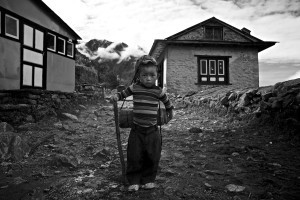
What to expect on a trek to Everest Base Camp, Nepal
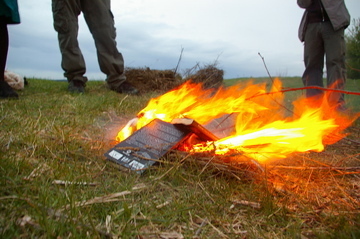
Twilight of the Travel Guidebook?
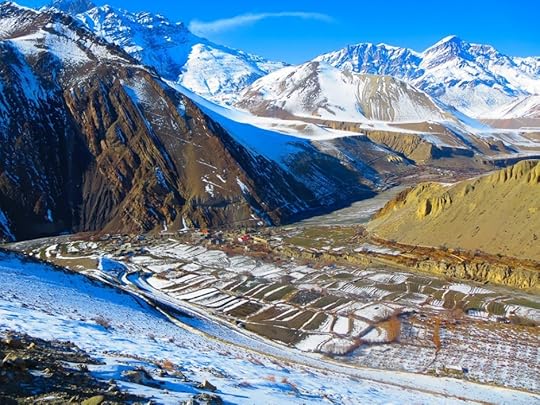
16
Down in the town of Kagbeni (at 9,200ft), the snow dissipated and the earth started to show again. How exciting after such wintry conditions. We saw more signs of fruit and vegetables growing again, and enjoyed wearing fewer layers!

17
In the higher elevation towns we noticed fewer women and children. We were told that in the winter they leave for lower elevation.

18
Following the Kali Gandaki River, we entered the deepest valley in the world. This gorge is encompassed by two major peaks: Dhaulagiri (8,167m or 26,795ft) to the west, and Annapurna I (8,091m or 26,545ft) to the east. It’s also an area of high winds, so hiking earlier in the day can be more pleasant. Here, on the backpack, you can see a lightweight solar panel; we took advantage of the sun for charging cameras and other electronics which proved valuable.

19
Winter means not much business for the more remote villages. We were the first customers for this shopowner in a week, and she was overjoyed with the sales we gave her. Her appreciation and excitement was more meaningful than the beautiful yak wool blankets we loaded into our backpacks.
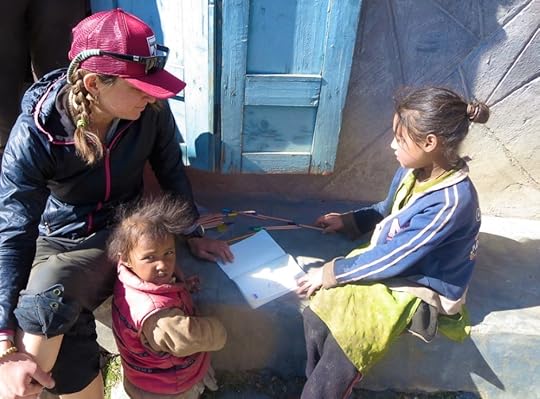
20
We used drawing in a journal as a way to engage with the children, as well as to wrap up each day for ourselves as a group of three. Images we drew depicted our highlights or lows from the day. Our total hiking distance was 183km (114 miles) in 16 days. Our average hiking day was 10km, (6 miles) (min 6km, max 20km) and 6 hours (min 4 hours, max 10 hours).

21
Annapurna I (26,545ft), made more dramatic and spectacular with a winter coat of fresh snow. “Adventure is not in the guide book, beauty is not on the map. Seek and ye shall find.” (Terry Russell). Annapurna Circuit in January. Yes, it is possible. And exciting. And beautiful. You just need to be prepared.
The post How to trek Annapurna in the dead of winter appeared first on Matador Network.

Have you heard of 'peak water'?
Chances are you’re familiar with the term “peak oil” — the moment when our global production of oil stops increasing and starts declining. It’s a frightening thought when you consider how important oil is to our global economy, and how completely incompetent we’ve been at weaning ourselves off it.
What you might not be aware of is “peak water” — the point where we start consuming water faster than it’s being replenished. It’s a really scary thought. Fortunately, we have the people at environmental website Ensia to help us understand it with this infographic.
And surprise! The US uses way more water than virtually everybody else. But there are some incredible practices that you probably never thought were a waste of water which are actually huge water sucks. Like t-shirts. Check it out:
The post You’ve heard of “peak oil,” but probably not “peak water” appeared first on Matador Network.

Never say this to a Canadian

Photo: hobvias sudoneighm
Most of us are a peace-lovin’ bunch. We don’t go around flaunting our national pride, but we’re quick to defend our Canadian roots.
1. “Yeah you guys have healthcare, but it sucks.”
An American actually said this to me a few weeks ago. If there’s one thing most Canadians agree on, it’s that we’re extremely grateful for free healthcare, and we don’t mind paying higher taxes to have it. (Those who aren’t haven’t had health issues.) I’m not sure where this idea came from that the quality is lower than elsewhere, and sure sometimes our wait times to see specialists are a little atrocious, but we’re still pretty happy about not having to pay $3,000 for blood work.
We also get kickass maternity leave. A whole year of it.
2. “Your military is puny.”
Because other countries generally think we’re okay people, and they don’t wanna fight us.
3. “You’re from Canada — you must be used to the cold. Ha-ha. I’m original.”
I admit I sometimes joke about this myself. I was roaming around Santorini recently on a sunny day, wearing only a t-shirt and shorts. A local saw me and did a double take. “It’s too cold! Come back in the summer!” And then I tossed out a line about me being used to it as a Canadian. Ha-ha.
In reality, it’s only the far north that gets those extreme temperatures. Most of the major cities, like Vancouver and Toronto, typically experience milder winters.
Or, when our winters are shit, they’re usually offset by brilliant summers of 30-degree temperatures and nonstop sunshine. Really. It’s not the Arctic Circle.
4. “Canadians are so nice!”
We’re not all nice. I don’t intend to defend douchebaggery, but generalizations can be frustrating. The biggest asshole I’ve ever met while travelling, actually, was another Canadian. I told him I was from Newfoundland and Labrador, and he cracked some joke about “redneck Newfies” that made my blood boil. Canadians can be aggressively loyal to their home cities or provinces.
5. “All Canadians wear flags on their backpacks so they’re not confused with Americans.”
People automatically assume I’m an American when I travel. It’s a big country. I mean, the state of California has more people than the entire country of Canada.
And while I’m vehemently proud of my Canadianness, wearing a flag is unnecessary, and it’s silly to think we all do it. Who cares if they think I’m American?

More like this: 7 signs you were born and raised in Canada
If people are treating you poorly, it might not actually have anything to do with being American (or any other citizenship). You might just be an asshole.
6. “You say ‘about’ funny!”
NO WE DON’T. SHUT UP.
7. “You say ‘eh’ all the time!”
Big fat lie. I’m from the East Coast, where it’s more common to punctuate a sentence with “hey?” or various other Newfoundlandisms.
8. “I’ve been to Canada! I visited Toronto.”
Canada is incomprehensibly massive. Most of my friends haven’t been to the other side of my province, never mind the damned country. The diversity is insane. You cannot compare Newfoundland and Labrador to Quebec or British Columbia, and vice versa. They’re practically their own countries. So when you make Canadian assessments after only seeing an extremely small part of it, you’re just showcasing your own ignorance.
9. “Margaret Atwood sucks.”
We will fight to the death.
10. “The only interesting thing to happen in Canadian politics is ROB FORD!”
As if finally we have our own undeniably corrupt politician and now cannot be triumphant about our ‘functional’ government. Did you know that most Canadians abhor Stephen Harper, although he won the last election despite being the first prime minister to have his government ruled in contempt of Parliament? Or that the entire province of Quebec came very, very close to declaring independence and separating from Canada? It gets real up here.
11. “You’re a Canadian and you don’t watch hockey? That’s not right.”
We’re not all hockey lovers, although even I love the pride invoked by the sport. I mean, we’re a country that legalized selling alcohol at bars at 5am just so people could get up and watch the 2014 Olympics gold medal game. Pride. 
The post 11 things you should never say to a Canadian appeared first on Matador Network.

Matador Network's Blog
- Matador Network's profile
- 6 followers

















